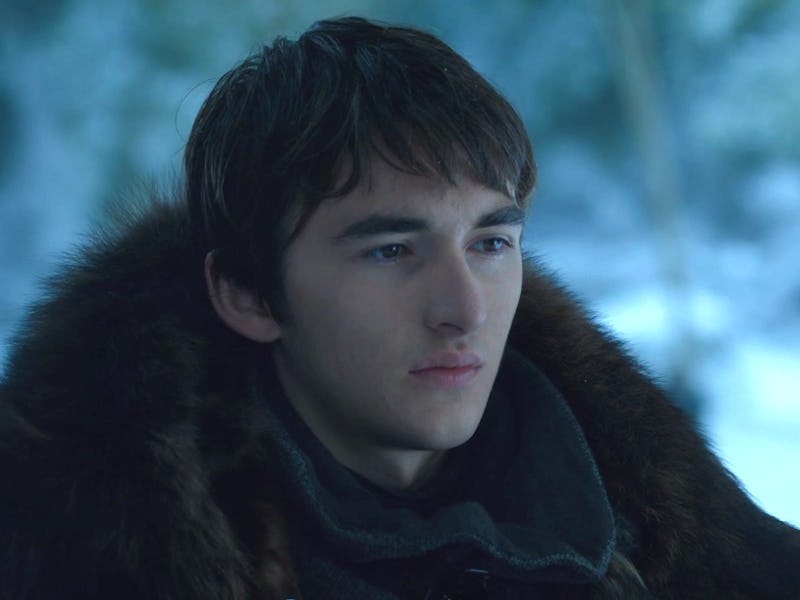Here's What Those Weird Religious Plots Mean on 'Game of Thrones'
How Melisandre, Bran Stark, and the Lord of Light connect.

Ever since Melisandre resurrected Jon Snow, the role of religion on Game of Thrones has been as slippery as Littlefinger’s accent. Previously, the show focused on belief systems in relation to their impact on human behavior. But now, weird religious subplots are everywhere. Here’s what they mean.
Back in the day, faith poisoned Lancel Lannister’s mind, turning him into a fanatic. On the other hand, faith healed the Hound’s, paving the way for his attitude adjustment. But until Seasons 6 and 7, the narrative didn’t take a stance on whether the gods themselves were real. But Jon’s resurrection changed everything.
Now, faith is a bigger deal and the Lord of Light has a curious legitimacy. He’s the only god who has been treated as “real” insofar as his ability to have actual power and control over the story. What could Game of Thrones mean by this? Now that Season 7 has sent Melisandre to Volantis, there might be an answer.
There’s a hint at how the Lord of Light connects to the big picture, and it has to do with a maybe not-so-crazy theory about Bran Stark’s powers.
The gist of the theory is that the entity the Red Priests know as the Lord of Light is actually Bran Stark. As Season 6’s “The Door” revealed, Bran’s time-loop capabilities can make voices cross the space-time continuum. Young Hodor in the past heard chants of “Hold the door!” in the present.
If Bran’s voice was able to cross space and time once, there’s no reason why it couldn’t again. Any time Red Priests speak of hearing “voices in the flames” then, it could logically be Bran Stark. They merely think it’s the Lord of Light.
This isn’t to say the Red Priests don’t have real magical powers. Since Melisandre resurrected Jon Snow and Thoros of Myr has resurrected Beric Dondarrion, there’s no question that they do. And their power could have an important role in the war to come.
In Season 7’s “The Queen’s Justice,” Melisandre leaves Westeros for Volantis. She tells Varys she’ll eventually return because she “has to die in in this strange land.” Assuming that line is a Chekhov’s gun, we haven’t seen the last of Melisandre.
Volantis is a Free City that was founded as a colony of Valyria. More importantly, it happens to hold a gigantic temple to the Lord of Light that is said to be three times the size of the Great Sept of Baelor (RIP).
In other words, Melisandre is going to Red Priest HQ.
Just as Sansa summoned the Knights of the Vale to help her people out of a bind during the Battle of the Bastards, Melisandre and a large group of Red Priests could re-enter the story — summoned by Bran Stark — during a convenient time.
Maybe they’ll provide a valuable resurrection if the Night King kills Jon again, or maybe they’ll do something else entirely. Regardless, a connection between the Red Priests and Bran Stark would be a neat explanation for the show’s treatment of religion.
Game of Thrones is currently airing Sunday nights on HBO.